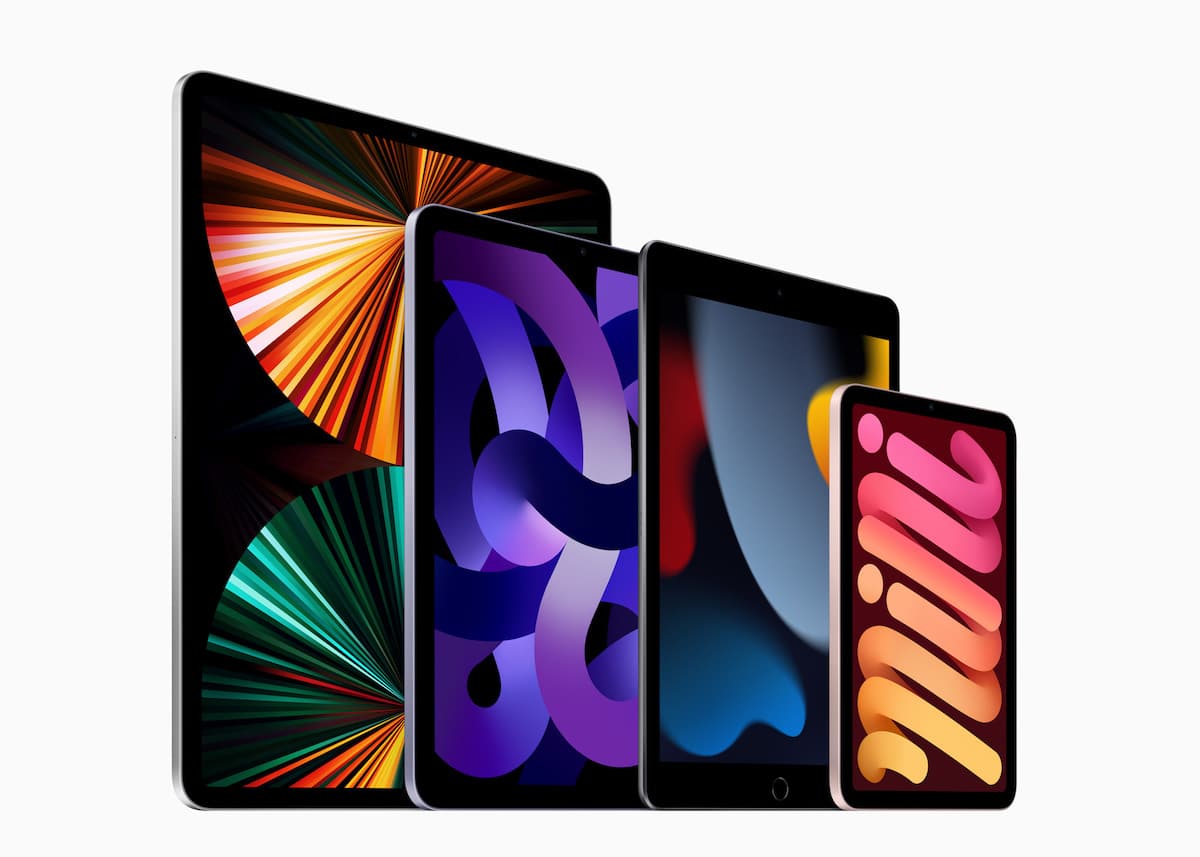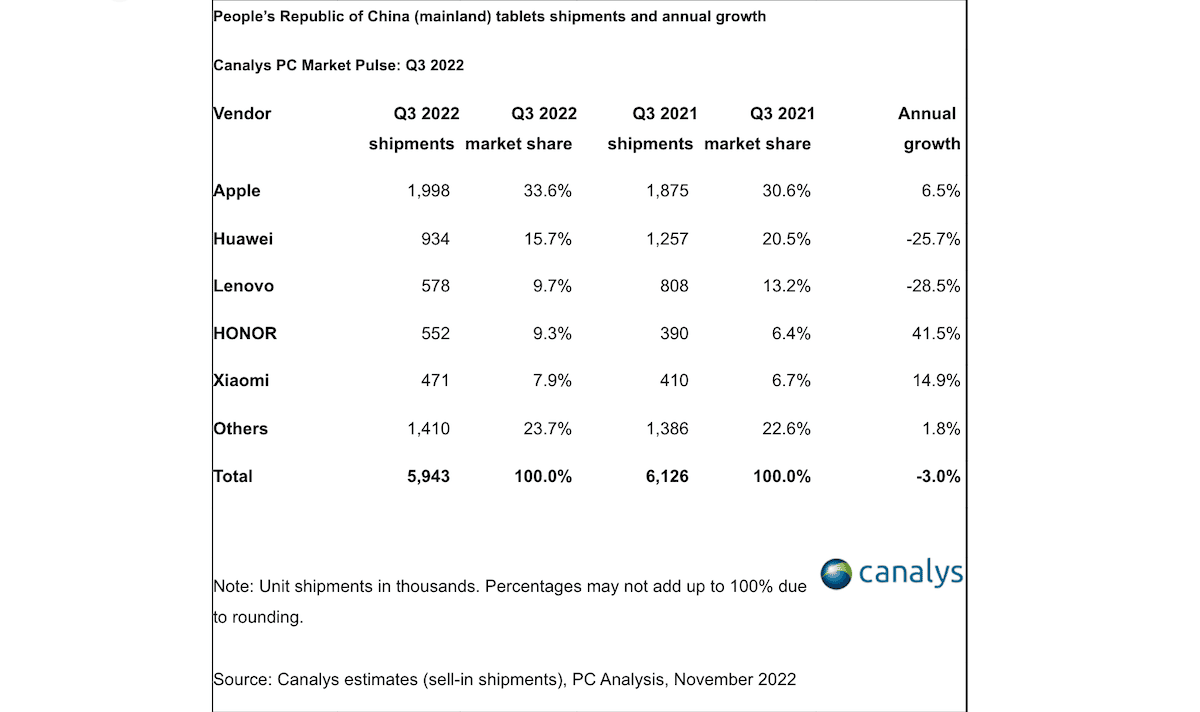Apple iPad dominated the Chinese tablet market in Q3, 2022 according to Canalys’ latest survey of China’s PC (desktop, notebook, and workstation) shipments. In Q4, 2022, Apple reported $90.1 billion in record earnings and iPad sales accounted for $7.2. billion with a slight decline from $8.3 billion in Q4, 2021.
Although China’s PC shipments fell by 13% and tablets saw a 3% year-on-year drop in Q3 2022, the 18% growth of the tablet market saved the overall consumer segment in the same quarter from a massive decline.
The consumer tablet market was the only bright spot in Q3, with 18% year-on-year growth, saving the overall consumer segment from the massive decline seen in the commercial space.

iPad saw a 7% slow growth in Q3, 2022 in the waning Chinese market
Since the global chip crisis began in 2020, iPad shipments were drastically affected by supply constraints and its sales saw a decline till the fourth quarter of 2021. Even then, the tech giant launched the new iPad Air 5, fourth-generation iPad Pro 11-inch, and sixth-generation iPad Pro 12.9-inch this year.
The availability of more advanced iPad models with a variety of price ranges improved its sales in China. Huawei and Lenovo held second and third positions in Q3, 2022.
Apple held onto first place in the tablet space but its growth slowed to 7%, even as its iPad supply situation improved compared with Q2. Huawei and Lenovo came second and third, but faced a comparatively difficult quarter, both posting double-digit declines as they were hampered by component constraints and a drop in commercial demand for tablets.

Canalys Analyst Emma Xu explained that the latest success of the tablets segment has encouraged OEMs to invest in this category more.
“Smartphone vendors are proceeding full steam ahead as they see the tablet as a key opportunity to satisfy their existing users’ productivity needs. These new entrants bring a wealth of experience in mobile product development to the tablet space. Furthermore, they are investing in enhancing cross-device collaboration functionality and connectivity capabilities to ensure tablets fit in seamlessly with their wider IoT portfolios.
Read More: